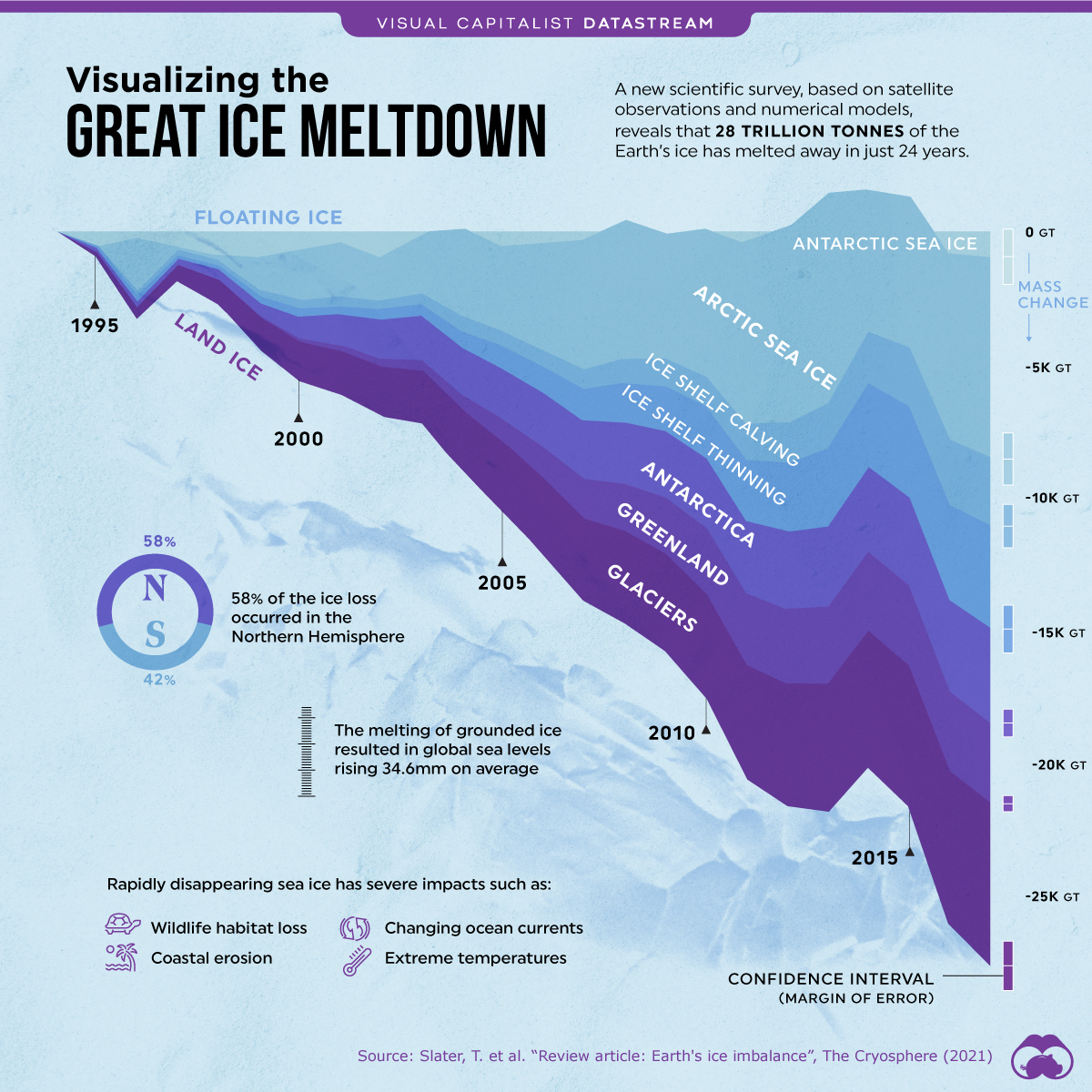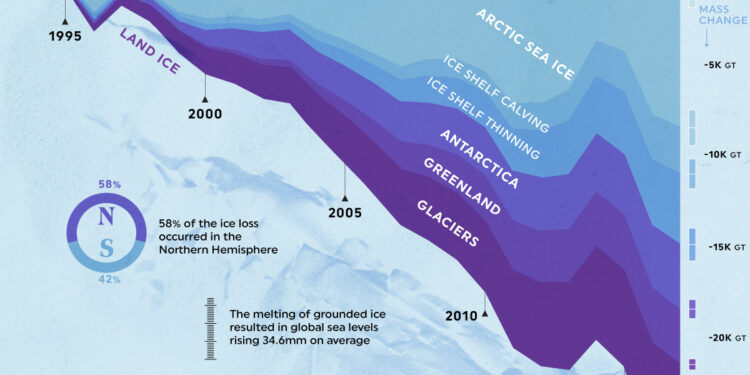Nearly 70% of the Earth’s freshwater is locked up in glaciers and ice caps, ground ice, and permafrost. However, this ice is melting at an unprecedented rate.
Based on data from a new scientific survey, this visualization reveals that 28 trillion tonnes of Earth’s ice has been lost between 1994 and 2017.
How much ice is being lost exactly?
Figures at such scales can be difficult to wrap our heads around. For the record, one billion tonnes of water is equal to 400,000 Olympic swimming pools.
It’s then a bit easier to comprehend why, when multiplied tens of thousands of times, this much-melted ice—specifically, grounded ice—has resulted in global sea levels rising by 34.6mm on average.
Over half (58%) of the ice loss occurred in the Northern Hemisphere, from Arctic sea ice and also grounded ice previously trapped in the Greenland ice sheet.
In fact, the rate of ice loss has risen from 0.8 trillion tonnes to 1.2 trillion tonnes per year, an increase of 57% since the 1990s.
Impact of the Ice meltdown on earths environment, nature and ecosystem
Rapidly disappearing sea ice has severe impacts on the environment, both in the short and long term:
- Wildlife habitat loss
- Coastal erosion
- Changing ocean currents
- Extreme temperatures
While rising temperatures are behind most of this historical global ice loss, it’s worth noting that lower levels of ice lead to a positive feedback loop. Less ice means less of the sun’s heat is reflected away from the Earth, instead of being absorbed back and further amplifying the global warming effect.








































